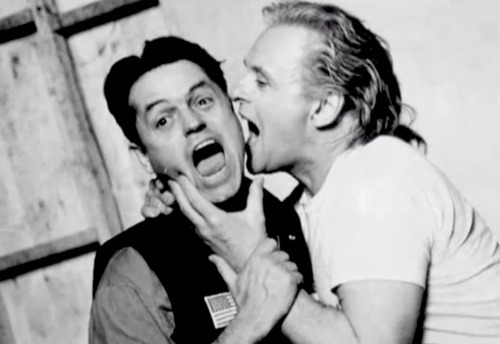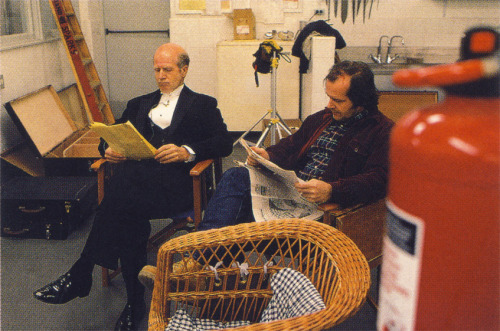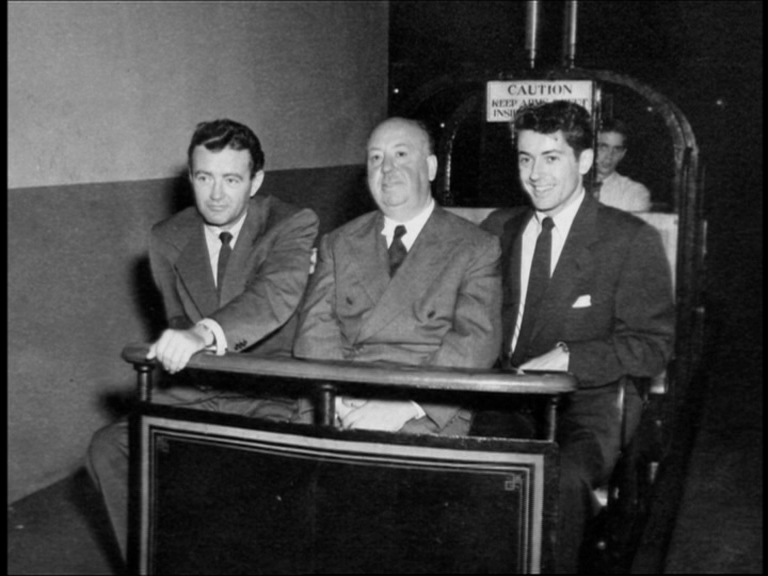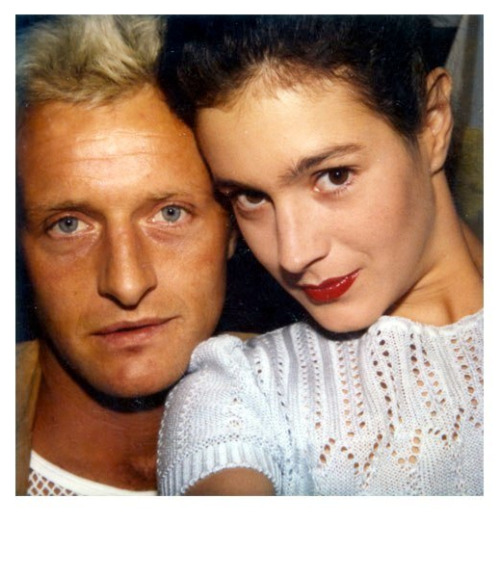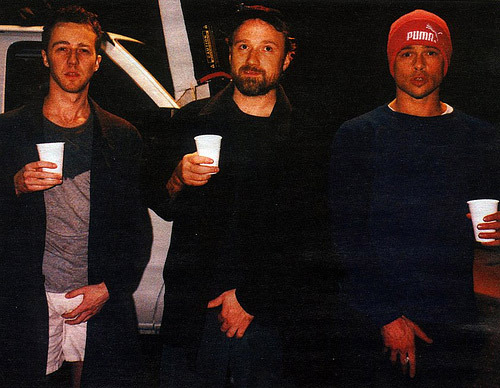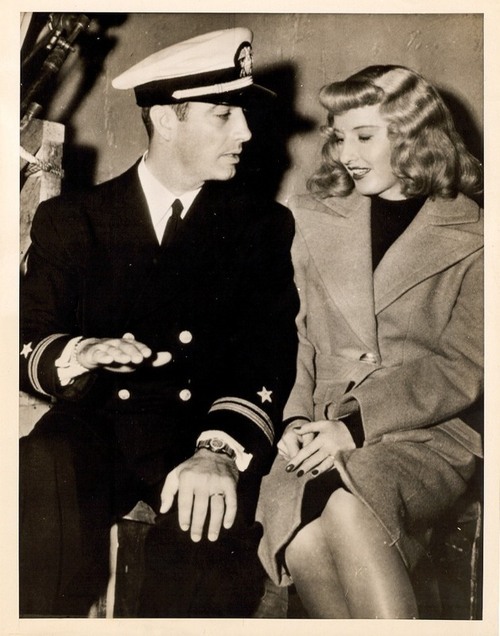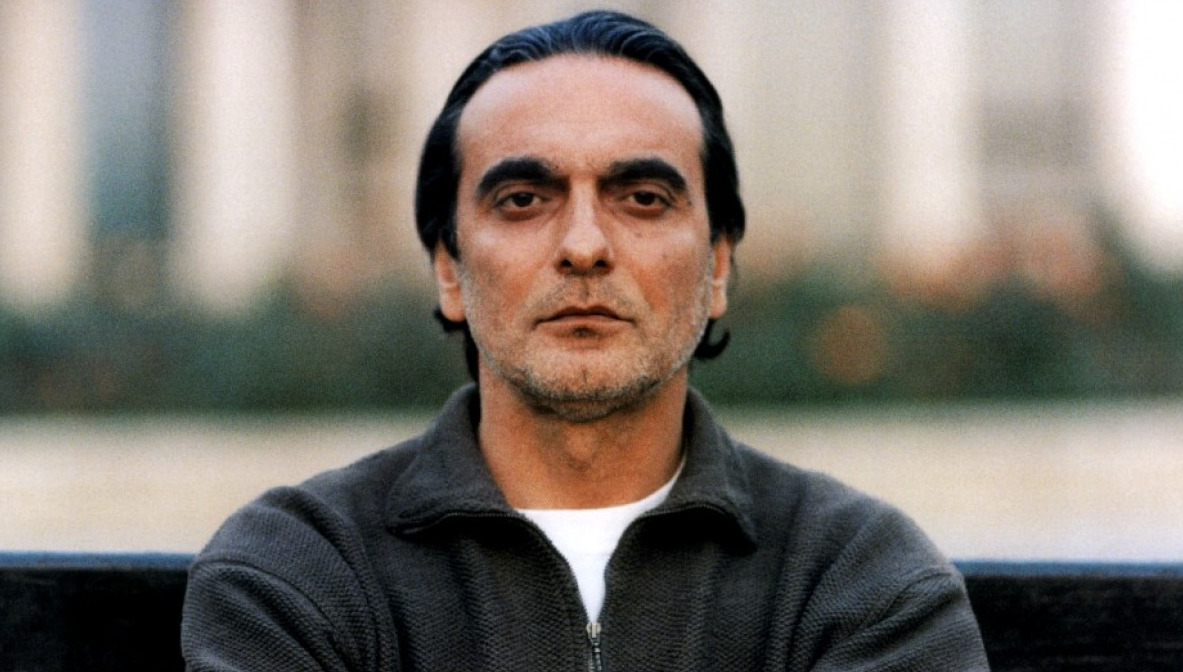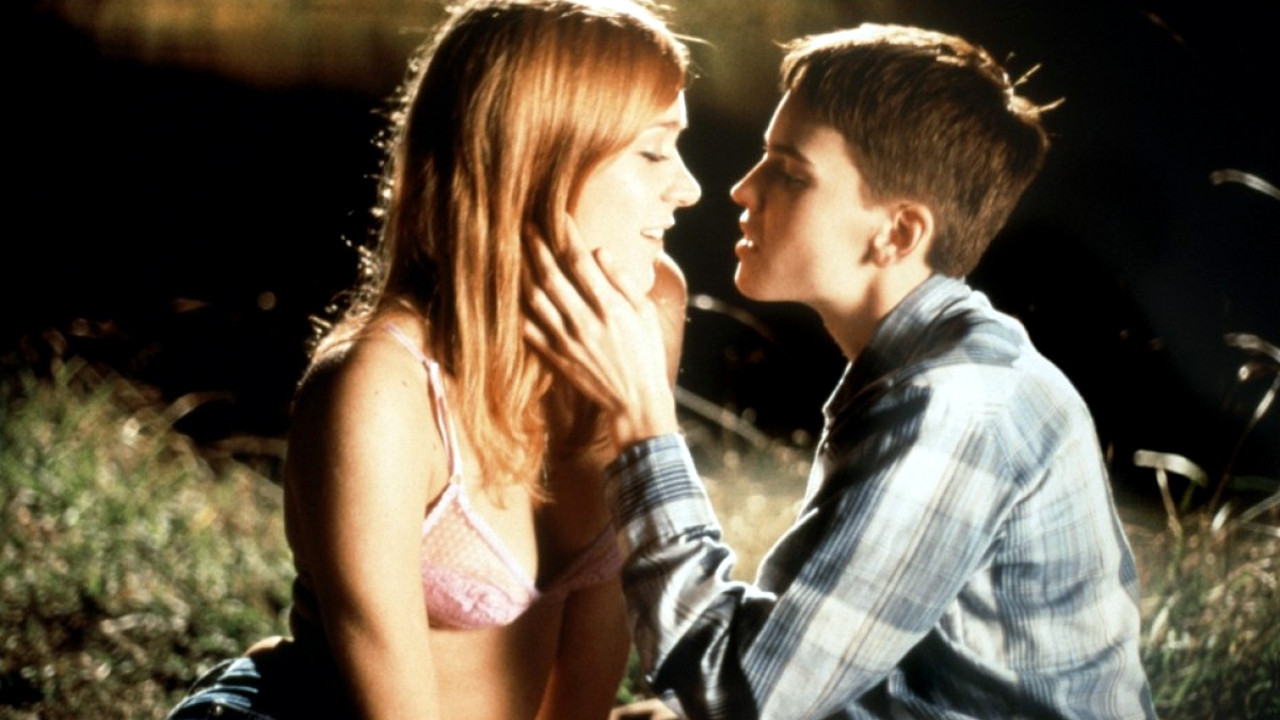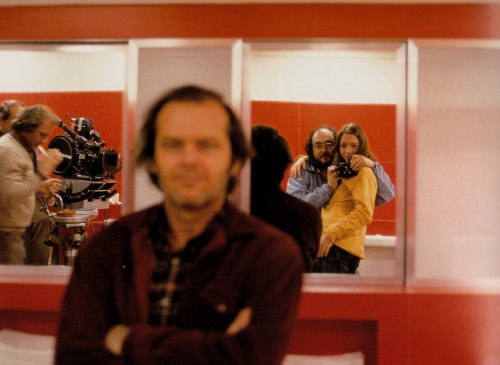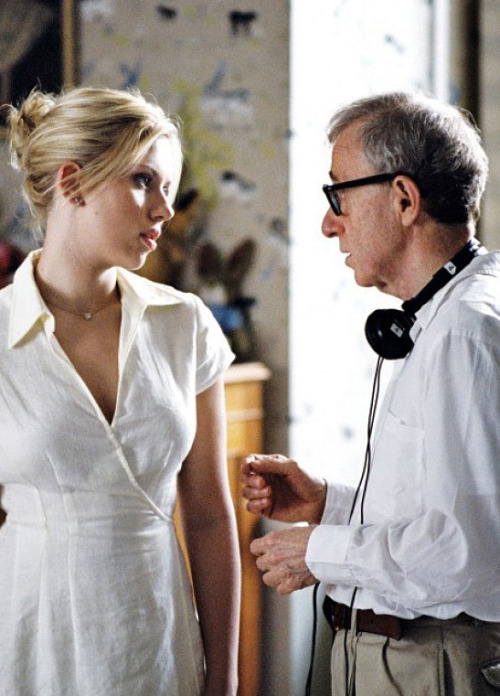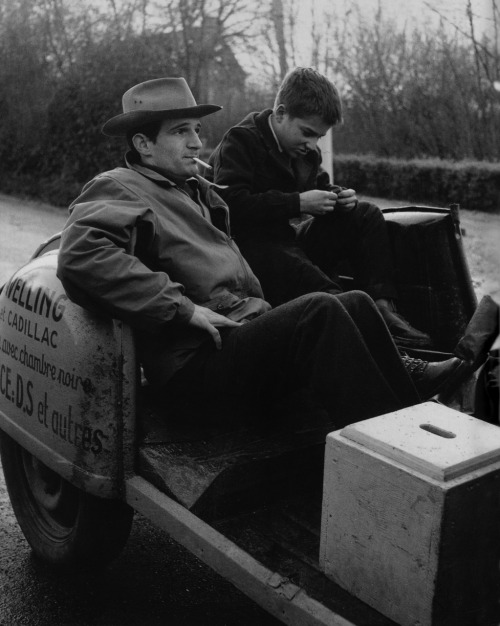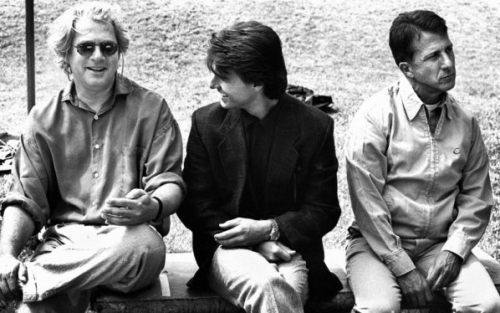10. Michael traps Laurie in the closet (Halloween, John Carpenter, 1978)
Halloween is regarded as a hallmark of slasher horror. Like Hitchcock's Psycho, it showed that gore is not necessary to heighten the realism of murder. In this scene, protagonist Laurie Strode hides in a closet to escape from Michael Myers. Michael doesn't find it difficult to deduce where Laurie is, and begins breaking down the closet door. It's a very nifty touch for Michael to turn the closet light on. The scene just would not be the same without that light bulb. What scares me the most about this scene is the way Laurie's demise seems inevitable. She's cornered in a closet with a strong man seeking to kill her. She has NO hope, right? Well, thanks to a makeshift coathanger weapon, she overcomes her attacker.
9. The murder of Casey Becker (Scream, Wes Craven, 1996)
If someone was to ask me why I like horror movies, this is the scene I would refer them to. It was one of the first murders I ever saw in a film, and it has left a lasting impression on me. I think this scene alone could constitute a short film. It's one of most perfect opening scenes of a film you could ask for. This wouldn't have been the same if it had occurred in the middle of the film. We begin with a phone call, and because it's the first scene in the entire Scream franchise, we have no way of deciding who the caller could be. It's a stranger. I love the notion of the home—the place where we should feel most secure—being turned into a danger zone. Ghostface (the killer) knows Casey's house like the back of his hand. This film is an absolute treat for horror buffs, who will especially love this scene because Ghostface quizzes Casey on plot elements of classic horror films. But I will remember this scene mostly because of Casey's murder. Seeing the knife penetrate her chest terrified me as a kid, and I'll never be able to shake that image of Casey Becker's dead body hanging from a tree branch, with her mother screaming in sheer terror.
8. Tina's death (A Nightmare on Elm Street, Wes Craven, 1984)
Tina Gray is the first person to fall victim to Freddy Krueger. Her death is shocking and strangely mesmerising, but it is the way Craven builds suspense that makes this scene something special. It is the chirping crickets as she exits from the back door of her house. The rolling trashcan lid. Krueger's shadow. These things put us in the mood for something ominous. When Krueger's arms elongate, we sense he is more supernatural than flesh, and when he holds up a razor-fingered glove and proclaims "This...is God," we realise there's no point in Tina praying. I think a crucial component to this scene is that Krueger catches Tina BEFORE she makes it back into the house. Most horror films allow the pursued to at least reach their safe haven first...not this one. Of course, Tina never even left her house. She was dreaming all along, but in the Elm Street films, dreams are where Freddy comes alive. We see Tina gravitate towards the ceiling, bleeding profusely. Ignore how noticeably fake it looks when she is sliced open. This was 1984. It's terrifying to put yourself in the shoes of Tina's boyfriend, Rod (Nick Corri). What must he be thinking? If Craven wanted to make an impression with the character of Krueger by filming a strong first murder, he achieved his goal, and then some.
7. Billy sees Santa kill his parents (Silent Night, Deadly Night, Charles Sellier, 1984)
Watch from 8:47 to 13:16. This is one of the darkest scenes I have seen in any film. It doesn't hold back...at all! A guy dressed in a Santa costume robs a store and kills the clerk, before making a quick getaway. Billy Chapman and younger brother Ricky are in the back seat of their parents' car. The Chapmans see the same man in the Santa suit pulled over on the side of the road. They ask him if he needs any help, and he draws a gun from his pocket, killing Mr Chapman. He pulls Mrs Chapman out of the car, slitting her throat and almost raping her. All this time, Billy has been cowering behind some bushes, watching through parted fingers. This is the set-up for a very macabre film, wherein Billy himself will don a Santa suit and murder people for fun. This scene is terrifying because of its uncompromising nature. It feels uncomfortably real. I imagine something like this has happened before. Most of us would trust someone in a Santa suit, because most people who wear them get paid to do it in shopping malls. People trust them enough to have their kids be photographed with them. But this film, and this scene in particular, subverts every cheery preconception we have about people who dress as Santa. It's incredibly frightening.
6. Hooper explores Ben Gardner's boat (Jaws, Steven Spielberg, 1975)
When it comes to Jaws, everyone talks about how ferocious the shark is. A lot of people forget about this scene, where oceanographer Matt Hooper (Richard Dreyfuss) dives underwater to explore the half-sunken boat of Ben Gardner, a local fisherman. Hooper finds a large shark's tooth lodged in the boat's hull and extracts it. He sees there is a gaping hole in the hull, but as he swims towards it, the head of Ben Gardner tumbles out, making for arguably the greatest jump scene in the history of cinema. John Williams' chilling score accentuates this scare perfectly.
5. Arbogast is killed (Psycho, Alfred Hitchcock, 1960)
Depending on your sensibilities, you will either find this scene incredibly cheesy or downright petrifying. I would like to think most people are scared by it, because it is executed rather expertly. The suspense is thrilling, largely in part to Bernard Herrmann's score. I'm not even going to explain how Arbogast is killed, just in case you're one of those readers who ignores watching the clips. You're not getting away with it this time. I'm TELLING you. Watch the above clip...and if you value your heart, make sure the volume's not too loud.
4. Cole meets Kyra (The Sixth Sense, M. Night Shyamalan, 1999)
Embedding disabled; copy/paste URL:
I first watched The Sixth Sense with my mum at the movies in 1999, when I was six years old. I remember loving it and telling all my friends about it when I got to school on Monday. I have watched it three times since then, I think. For some reason, after all those viewings, the film still isn't clear in my head. When I try to replay the events in my mind, I can't get anything in order. I'm pretty sure this scene occurs after some pivotal moment, but I really don't know. Cole (Haley Joel Osment) gets into the tent in his room, and I just love how he breathes heavily and his breath fogs up. A very iconic cinematic image. Then, the pegs keeping his tent together loosen on their own, and the camera pans to Kyra (Mischa Barton), a girl who died via deliberate poisoning by her mother. Kyra's ghost is vomiting profusely, and Cole hurriedly leaves his tent. I remember describing the vomit as looking like Weet-Bix when I first saw the film. I even told my mum the day we saw it. This scene blurs the line between a child's imagination and the supernatural, which is why it has always creeped me out.
3. Bathtub scene (The Shining, Stanley Kubrick, 1980)
We enter room 237 from the point of view of Jack Torrance (Jack Nicholson). The score is ominous. A nude attractive woman (Lia Beldam) steps out of the bath and seduces Jack. He hugs the young woman and begins to kiss her, but notices in the mirror that her soft skin has turned to decomposing flesh. This ghost ridicules Jack with scorning laughter, and this moment is intercut with shots of Jack's son, Danny, who is trembling as he remembers a similar encounter with a cadaver in the bathtub. This is the stuff nightmares are made of. Kudos to production designer Roy Walker for fashioning such an eerie bathroom.
2. Nurse station scene (The Exorcist III, William Peter Blatty, 1990)
It's a shame the whole scene isn't available on YouTube, but this clip is still pretty scary. Like I did with the Psycho clip, I'm not going to explain what happens here. This gets my vote as the most suspenseful scene in any film I have ever seen. It's extremely quiet. You could hear a pin drop. I had heard about this scene before I watched The Exorcist III, so my eyes were scanning all over the screen when this scene arrived. I KNEW something terrifying was going to happen, but I wasn't sure WHAT would happen or WHEN it would happen. It's a really different scene that goes against the grain of traditional jump scenes. I admire it for its style.
1. Crucifix masturbation scene (The Exorcist, William Friedkin, 1973)
I just watched it again to confirm if it deserves the spot for scariest scene. It does. Every single time, this scene makes me uncomfortable as hell. A lot of people say they find The Exorcist funny. I'll admit there are some scenes I giggle at now and again, but I've never laughed during this one. Never made a joke; never felt anything except absolute fear. Regan (Linda Blair) is powerless to the devil inside her. It's sad and horrifying to see her do what she's doing, knowing an innocent, cheerful little girl is somewhere in that body. Her mother (Ellen Burstyn) is petrified. There's a scene in the film where she refers to Regan as "that thing upstairs." This scene justifies that label. How anyone can watch this scene without feelings of repulsion is beyond me. Just for the record, I'm not offended that she uses a crucifix.


